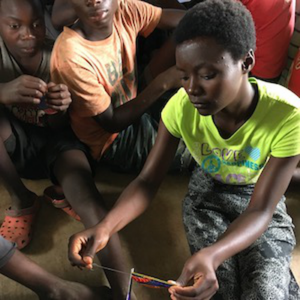 In 2021 Peace Corps Response marks a quarter century since its founding. Some moments that have defined it.
In 2021 Peace Corps Response marks a quarter century since its founding. Some moments that have defined it.
Photo: Community members in a village near Zomba, Malawi, learn to sew reusable sanitary pads for girls. Sheila Matsuda captured the moment as a Response Volunteer in Malawi 2018–19.
Crisis Corps was launched in 1996. At the outset, Volunteers were deployed to respond to natural disasters and assist with relief in the aftermath of violence. Over the years, the program expanded in scope, and Volunteers are now sent to meet a variety of targeted needs in communities around the world. In 2007, the name of the program changed to Peace Corps Response to reflect this shift.
Here’s a little history — including the program’s origins.
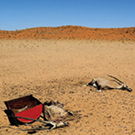 1992 | Beginnings
1992 | Beginnings
NAMIBIA: Peace Corps approves first short-term assignments. Ten Volunteers already serving elsewhere transfer to Namibia, responding to a prolonged, devastating drought.
Photo: Wikimedia Commons
1994 | April
RWANDA: The president is assassinated, and a campaign of genocide unfolds. Returned Volunteers work with National Peace Corps Association to activate the NPCA Emergency Response Network and deploy RPCVs to support work with refugees. Peace Corps, in conjunction with the International Rescue Committee, also transfers five Volunteers to the Burigi refugee camp, where they serve for five months.
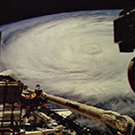 1995 | September
1995 | September
LESSER ANTILLES bears the brunt of Hurricane Luis. More than 3,000 people are left homeless. Eight RPCVS re-enroll with the Peace Corps, travel to Antigua, and help rebuild homes and provide training on hurricane-resistant construction.
Photo: NASA
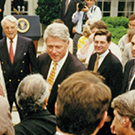 1996 | June 19
1996 | June 19
CRISIS CORPS is officially launched at a Rose Garden ceremony with President Bill Clinton and Peace Corps Director Mark Gearan. The Peace Corps is “based on a simple yet powerful idea: That none of us alone will ever be as strong as we can all be if we’ll all work together,” Clinton says.
Photo: Peace Corps
1996 | December
NATIONAL PRESS CLUB: Peace Corps Director Gearan announces plans for a “reserve” of up to 100 Crisis Corps Volunteers; some to travel to Guinea and Ivory Coast to work with Liberian refugees.
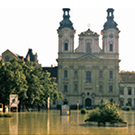 1997 | July
1997 | July
CENTRAL EUROPE hit by devastating floods. RPCVs who served in the Czech Republic return with Crisis Corps to assist relief efforts.
Photo: Bohumil Blahuš
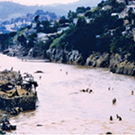 1998 | September
1998 | September
CARIBBEAN countries blasted by Hurricane Georges; more than 300 killed. Crisis Corps and Peace Corps Volunteers in Dominican Republic help with home reconstruction and emergency water and sanitation projects.
Photo: Debbie Larson / National Weather Service
1998 | October
CENTRAL AMERICA slammed by Hurricane Mitch. Hundreds of RPCVs who served in the region contact the agency to serve; Volunteers already in the region assist, too. Relief efforts in Honduras, Panama, Guatemala, El Salvador, and Nicaragua. Crisis Corps Volunteers have also served in Chile, following an earthquake, and in Paraguay in the wake of flooding.
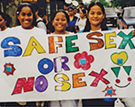 2000 | June
2000 | June
HIV/AIDS CRISIS: Peace Corps Director Mark Schneider calls on RPCVs to consider devoting their time, skills, and experience to serve in Crisis Corps as part of a new HIV/AIDS initiative. Five African countries have requested Volunteers in this capacity.
Photo Credit: Peace Corps
2001 | April
BOSNIA & HERZEGOVINA: Crisis Corps Volunteers begin assignments in first country where Peace Corps had no prior presence. They assist local municipalities and NGOs, plus international aid organizations.
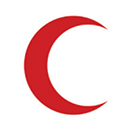 2002 | January
2002 | January
MAURITANIA hit by torrential rains, causing severe flooding. Red Crescent of Mauritania requests Crisis Corps assistance to help homeless families.
Image: Jon Harald Søby
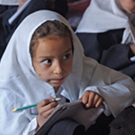 2002 | February
2002 | February
AFGHANISTAN: After the swearing-in of new Peace Corps Director Gaddi H. Vasquez, President George W. Bush announces that a Peace Corps team will travel to Afghanistan to assess how the program could help with reconstruction. It is possible a Crisis Corps team could follow. But Volunteers do not return to Afghanistan.
Photo: Alejandro Chicheri / World Food Programme
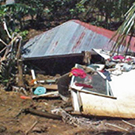 2002 | July
2002 | July
MICRONESIA struck by Typhoon Chataan, most devastating natural disaster in the country’s history. On the island of Chuuk, Crisis Corps Volunteers assist with reforestation and soil stabilization, and begin work with communities on water sanitation facilities.
Photo: Federated States of Micronesia Department of Foreign Affairs
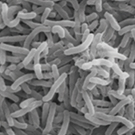 2002 | November
2002 | November
MALAWI hosts its first Crisis Corps Volunteers, requested by the government and UNICEF to address cholera outbreaks and assist with prevention.
Photo: Wikimedia Commons
2004 | March
GHANA: Crisis Corps Volunteers help launch HIV/AIDS education initiative.
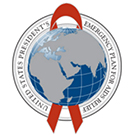 2004 | November
2004 | November
ZAMBIA: Volunteers funded by the President’s Emergency Plan for AIDS Relief (PEPFAR) work with neighborhood health committees and ministry of health.
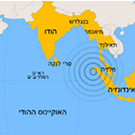 2004 | December
2004 | December
INDIAN OCEAN: A 9.1 magnitude earthquake generates a tsunami, devastating communities in a number of nations. Scores of RPCVs serve with Crisis Corps in Thailand and Sri Lanka to assist with relief measures.
Map: Wikimedia Commons
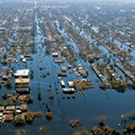 2005 | August
2005 | August
U.S. GULF COAST, particularly the New Orleans area, bears the brunt of Hurricane Katrina. For the first time, Crisis Corps Volunteers are asked to serve domestically; they partner with FEMA on relief work in hurricane-ravaged areas. While Peace Corps is an international organization, Director Gaddi Vasquez notes, “Today, as many of our fellow Americans are suffering tremendous hardship right here at home, we believe it is imperative to respond.” Volunteers take on 30-day assignments. Projects range from opening a disaster recovery center in the Lower 9th Ward to distributing food and water to displaced families. In total, 272 Volunteers serve 9,323 days and contribute 74,584 hours of service.
Photo: Wikimedia Commons
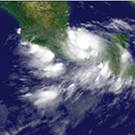 2005 | October
2005 | October
CENTRAL AMERICA hit by Hurricane Stan. In Guatemala, Crisis Corps Volunteers assist with reconstruction.
Photo: NASA
2007 | October
TULANE UNIVERSITY: Crisis Corps International Scholars Program launched; it pairs work on a master’s degree with a Crisis Corps assignment.
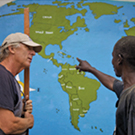 2007 | November
2007 | November
PEACE CORPS RESPONSE is the new name for Crisis Corps. Peace Corps Director Ron Tschetter says the new name better captures what Volunteers do, addressing critical needs in health, education, and technology — along with serving in disaster situations.
Photo: Peace Corps
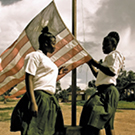 2008 | October
2008 | October
LIBERIA: Response Volunteers lead the return of the Peace Corps, after an absence of nearly two decades. They work in education to revitalize training, schools, libraries, and more; and in health training. Their swearing-in ceremony is attended by Liberian President Ellen Johnson-Sirleaf, Peace Corps Director Ron Tschetter, and U.S. Ambassador Linda Thomas-Greenfield.
Photo: Peace Corps
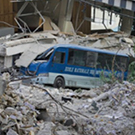 2010 | January
2010 | January
HAITI struck by 7.0 magnitude earthquake and scores of aftershocks. Some 250,000 people die;
1.5 million are left homeless, without access to clean water or food. Many hospitals are destroyed. Response Volunteers serve as part of global relief efforts.
Photo: Wikimedia Commons
2012 | January
JAMAICA: Dorothy Burrill, 73, is first Response Volunteer who hasn’t already served in the Peace Corps. Eligibility now open to those with 10 years’ work experience and language skills.
2012 | March
GLOBAL HEALTH SERVICE PARTNERSHIP launched in collaboration with PEPFAR and Global Health Service Corps. The goal: address shortages of health professionals by investing in capacity building and support for existing medical and nursing education programs in African nations of Tanzania, Malawi, and Uganda.
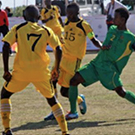 2012 | October
2012 | October
SOUTH AFRICA: Response Volunteer Meisha Robinson and 12 Peace Corps South Africa Volunteers collaborate with Special Olympics staff and community members to organize the inaugural Special Olympics Africa Unity Cup. Fifteen nations’ soccer teams compete.
Photo: Special Olympics
2013 | November
THE PHILIPPINES pummeled by Super Typhoon Yolanda, killing thousands. Response Volunteers assist in affected areas.
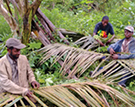 2014 | September
2014 | September
COMOROS: Peace Corps announces it is returning, after a decade’s absence, with 10 Response Volunteers leading the way — to teach English and support environmental protection.
Photo: Peace Corps
2015 | March to April
MICRONESIA hammered by Typhoon Maysak. Response Volunteers assist with reconstruction.
2015 | December
PARTNERSHIPS: Peace Corps Response and IBM Corporate Service team up to engage highly skilled professionals to work collaboratively. Response also leverages partnerships with Centers for Disease Control and Prevention and Rotary International.
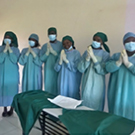 2019
2019
ADVANCING HEALTH PROFESSIONALS program launched in five countries: Eswatini, Liberia, Malawi, Tanzania, and Uganda. The program succeeds the Global Health Service Partnership and assigns Volunteers to nonclinical, specialized assignments that enhance the quality of healthcare in resource-limited areas, improving healthcare education and strengthening health systems at a societal level.
Photo: Peace Corps
2020 | March
GLOBAL: COVID-19 leads Peace Corps to evacuate all Volunteers and Response Volunteers from around the world.
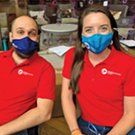 2021 | May
2021 | May
UNITED STATES: Response Volunteers begin serving with FEMA community vaccination centers to battle the COVID-19 Pandemic.
Photo: Peace Corps